|
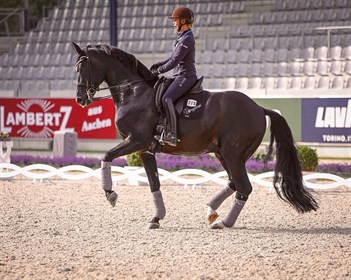
Therese Nilshagen and Dante Weltino in the piaffe.
© Roger Fitzhardinge
Training at Home with Roger Fitzhardinge: Understanding collection
A couple of days ago we put the call out to our readers to ask our dressage expert, Roger Fitzhardinge, any training questions they might have.
Well, here we have our second question, from Lesley McKay and Carrin Romais:
“Would love some exercises to help with collection.”
Here’s what Roger has to say…
Every time you ride your dressage horse, you are without knowing it probably improving his collection!
When you pay attention to improving collection, then it becomes even more apparent. However, before you can really ride exercises and improve collection you firstly have to put your mind into gear and understand what collection is and why it is important.
Collection is basically when a horse shows a shorter, more active stride with a lowering of the quarters and a raising of the forehand. The stature of the horse looks puffed up and dominant. He shows a great degree of power, yet is as light as a feather with a raised neck and shoulders due to the weight being transferred over the hind legs and away from the shoulders… thus allowing a freer front leg and forearm.
So… the object of the exercise to increase collection and lightness is primarily to get the horse’s weight more over the hind legs, to bring the hindlegs more up and under the body.
The most engaged and weight being transferred over the hind leg results ultimately in a “Levade”.
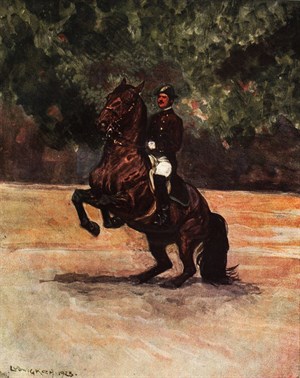
The Levade.
© Ludwig Koch
This idea will give you an image of what is meant about getting the forehand raised by gaining the lowering of the quarters and putting the horse’s hindleg, with better bent hocks, under the horse’s centre of gravity. Of course, the Levade is not seen in dressage but is a high school movement and I am only mentioning it as it gives you the idea of engagement and balance.
The next image that may help to see engagement is in the reining horse doing a sliding stop.
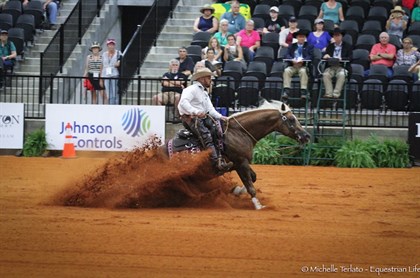
Dan James on Dom Magnum perform a sliding stop.
© Michelle Terlato
Here it’s easy to see that the hindlegs are so far under that the front feet barely touch the ground.
Now… to put this into perspective and start to see about getting our training towards always getting a better engaged hindleg, isn’t always such an easy concept. Without eyes on the ground or the use of mirrors, it’s not easy to get the feeling and realise it!
For me the best visualisation to feel this is by using a half-filled bottle of water and pretending it’s your horse.
Get a half-filled bottle of water.
Hold it parallel to the ground.
Tilt it lid end (head) up and the water will flow to the rump end.
Now this is like getting the horse’s body back over the hind legs… you can’t make that bottle rear up if all the water is in the shoulders.
How to get the water in the back of the bottle?
As soon as you ride forward or move the bottle forward the water does tend to flow to the back. This is a start! But you can’t just keep riding forwards forever!!
Now the art is to think that your horse when you are astride, is that half full bottle of water. You must get the feeling that through keeping the forehand up a little and slowing down, that you do not get the feeling the water runs forward – as this is creating the downhill or ‘on the forehand’ feeling.
The same you must do when you ride forwards and visualise that you are not going to let the water flow to the front end. If you let the balance go over the forehand then you lose the engagement and the water is no longer in the hind end, but runs to the front.
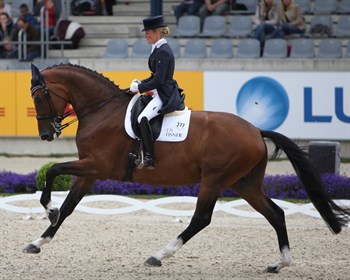
Ride forwards and don't let the water flow to the front end!
© Roger Fitzhardinge
To think of this as you ride transitions forward and back, of keeping the feeling that you have control of the water so it doesn’t slop around but stays stable is a good way to feel the beginnings of collection or engagement.
So, when you start to ride and keep this theory or thought in your mind, things will come to you that you must be able to do to enable control of the water.
1. Sharp responses to the leg to move forward, but smooth and nippy not jerky.
2. Honest and clear responses to the seat and hand to slow down.
(A good way to think about training the slowing down response is to visualise that there is a set of reins that go from the bit to the point of your shoulders. When you want to slow down think that you use that imaginary set of reins and it’s you bringing your centre of gravity back and down, that is the aid to come back. Of course, in the beginning when your horse doesn’t oblige, then you use the reins that are to the hand to reinforce the body position that he needs to listen to.)
3. Of course you need to have your horse as straight as possible and not falling in or out, as this will also slop the water about and make the balance hard.
I hope that you are not confused by this… putting collection into words when it’s an action and how to begin is not easy. I hope that this may shed some light as to what to visualise and try to feel when you are riding.
While you are out there slopping water everywhere (well let’s hope not!) – steady and back and forward is the way to go, always keeping the balance and the feeling of the weight in the back end of the horse.
Think also of two things that help me:
1. Ride transitions within the pace like a wave that goes up and down the beach. Smooth and silky.
2. Think of transitions within the pace like playing scales on the piano… smooth and regular and the better you get at them, the quicker you can play them. But never skip a note and always be in control of the tempo and ease!
Go have a think about this concept and then we can get on to more interesting collecting exercises, but first you must get the basic controls in place and established.
Read more from Roger:
Training at Home with Roger Fitzhardinge: Finding balance on the circle
READ THE LATEST NEWS ARTICLES HERE
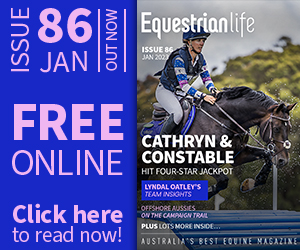
|

